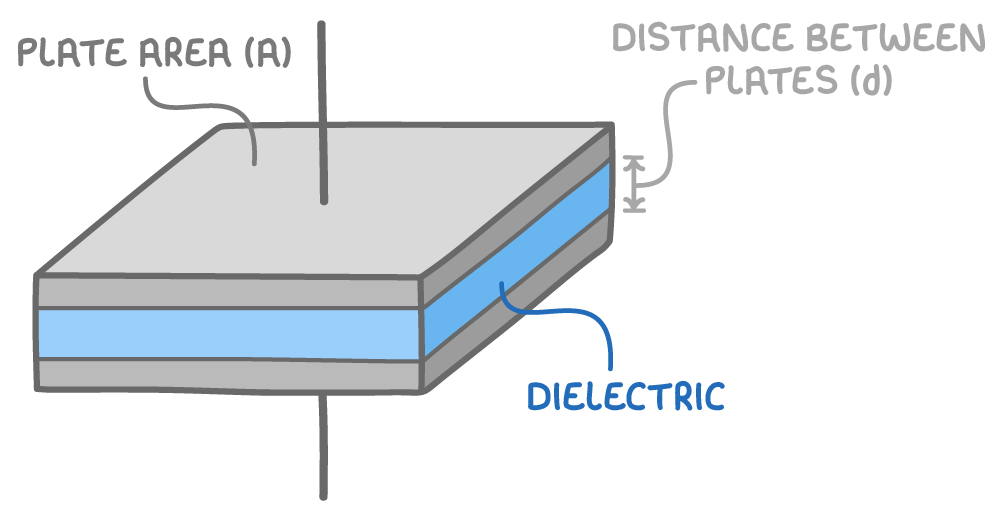Capacitance
This lesson covers:
- How capacitors store charge on plates
- Defining capacitance and its units
- Calculating capacitance for parallel plate capacitors
Capacitors store charge on plates

A capacitor is an electrical device composed of two conducting plates, typically metallic, separated by an insulator known as a dielectric.
- When linked to a power source, such as a battery, opposite electric charges accumulate on each plate.
- This accumulation of charges generates a potential difference, or voltage, between the plates.
- The plates continue to hold these charges, maintaining the voltage even after being detached from the power source.
Defining capacitance
Capacitance is a measure of the amount of electric charge a capacitor can store per unit voltage:
C = VQ
Where:
- C = capacitance (F)
- Q = electric charge (C)
- V = potential difference (V)
1 F is a very large unit of capacitance and capacitors are commonly used in the pico-farad to micro-farad range.
Capacitance of a capacitor
A simple capacitor can be made from two metal plates separated by an insulating material. The capacitance of the capacitor depends on the area of the plates, the distance between the plates and the permittivity of the dielectric material placed between the plates.
C = dAϵ0ϵr
Where:
C = capacitance (F)
A = area of capacitor plate (m2)
ϵ0 = permittivity of free space (8.85 x 10-12 F m-1)
ϵr = relative permittivity of dielectric (F m-1)
d = separation of capacitor plates (m)
Note: If no dielectric is present, ϵr has a value of 1.
Worked example - Calculating capacitance of a parallel plate capacitor
Calculate the capacitance of a parallel plate capacitor where each plate has an area of 0.01 m2 and the distance between the plates is 1 mm. A dielectric is inserted between the capacitor plates with a relative permittivity of 3.0.
Step 1: Formula
C = dA ϵ0ϵr
Step 2: Convert mm to m
to convert from mm to m, divide by 1,000
1 mm = 0.001 m
Step 3: Substitution and correct evaluation
C = 0.0010.01×8.85×10−12×3.0=2.66×10−10 F